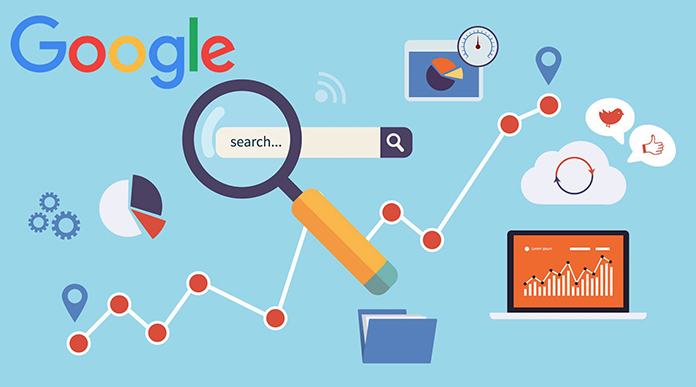Introduction
In the age of information overload, marketers are constantly bombarded with data from multiple sources—social media analytics, website traffic, email marketing performance, and more. But raw data alone is not enough. The ability to transform complex data sets into visually appealing and easy-to-understand insights is what makes the real difference. This is where data visualization comes into play.
Data visualization helps marketers quickly identify trends, patterns, and anomalies in their data, making it easier to make informed decisions and optimize marketing strategies. In this blog, we will explore the importance of data visualization in marketing, the best tools available, and essential tips to create compelling visual stories that drive results.
Why Data Visualization is Crucial for Marketers
Marketing is a data-driven field, and visualization helps marketers make sense of vast amounts of information. Here are some key reasons why data visualization is essential:
1. Simplifies Complex Data
Marketers deal with extensive datasets from Google Analytics, CRM software, and social media insights. Charts, graphs, and infographics help simplify this data, making it easier to analyze and present.
2. Enhances Decision-Making
Visualized data enables quick decision-making. Instead of sifting through spreadsheets, marketers can use dashboards and visual reports to spot trends and make informed decisions instantly.
3. Boosts Engagement
Visual content is more engaging than plain text. Whether it’s a social media post, a presentation, or a report, well-designed visuals capture attention and enhance audience understanding.
4. Identifies Patterns and Trends
Graphs and charts make it easier to identify trends in customer behavior, sales patterns, and marketing campaign performance, helping marketers adjust their strategies accordingly.
5. Strengthens Reporting and Communication
Data visualization improves communication within teams and with stakeholders. Whether presenting campaign results to executives or explaining customer trends to a sales team, visualized data tells a clearer story.
Top Data Visualization Tools for Marketers
There are many tools available for creating data visualizations, ranging from simple drag-and-drop platforms to advanced analytics software. Here are the top tools marketers should consider:
1. Google Data Studio
🔹 Free and easy to use
🔹 Integrates with Google Analytics, Google Ads, and other marketing tools
🔹 Allows real-time data updates and interactive reports
2. Tableau
🔹 Powerful analytics and visualization capabilities
🔹 Connects with multiple data sources
🔹 Ideal for advanced data analysis and dashboard creation
3. Power BI
🔹 Microsoft’s business intelligence tool
🔹 Best for teams using Microsoft products
🔹 Offers AI-powered insights and interactive dashboards
4. Canva
🔹 Great for creating infographics and simple data visuals
🔹 Drag-and-drop interface
🔹 Ideal for social media marketing and presentations
5. Infogram
🔹 Web-based visualization tool
🔹 Pre-designed templates for quick infographic creation
🔹 Supports live data integration
6. Chart.js
🔹 JavaScript-based open-source library
🔹 Best for developers who want custom charts
🔹 Works well for embedding data visuals in websites
7. Domo
🔹 Business intelligence platform
🔹 Combines data analysis with visual reporting
🔹 Best for enterprise-level marketing teams
8. Sisense
🔹 AI-powered analytics
🔹 Allows marketers to visualize big data efficiently
🔹 Good for predictive analytics in marketing
9. Looker (by Google)
🔹 Advanced data analytics and visualization tool
🔹 Integrates well with Google Cloud
🔹 Best for marketing teams that rely on data-driven decisions
10. Piktochart
🔹 User-friendly infographic and presentation tool
🔹 Ideal for content marketers
🔹 No design skills required
Tips for Creating Effective Data Visualizations
Simply using a data visualization tool is not enough. To create impactful visuals, marketers should follow these best practices:
1. Choose the Right Type of Visualization
Different types of data require different visual formats. Here’s a quick guide:
✔ Line Charts: Best for showing trends over time (e.g., website traffic, sales growth)
✔ Bar Charts: Ideal for comparing different categories (e.g., sales by region, campaign performance)
✔ Pie Charts: Useful for showing proportions (e.g., market share, traffic sources)
✔ Heatmaps: Great for visualizing user behavior (e.g., website clicks, engagement levels)
✔ Scatter Plots: Help identify correlations (e.g., ad spend vs. ROI)
2. Keep It Simple
Avoid clutter and unnecessary elements in your visuals. A clean and simple design enhances readability and comprehension.
3. Use Consistent Colors and Branding
Stick to your brand’s color scheme to create a professional and cohesive look. Use contrasting colors to highlight important data points.
4. Add Context to Your Data
Numbers alone don’t tell a story. Use captions, labels, and brief explanations to provide context for your visuals.
5. Focus on Key Insights
Don’t overload your audience with too much information. Highlight the most critical data points to make your visualization impactful.
6. Make It Interactive (If Possible)
Interactive dashboards and charts allow users to explore data in-depth. Tools like Google Data Studio, Tableau, and Power BI enable interactive visualizations.
7. Optimize for Mobile Viewing
Many people access reports and presentations on mobile devices. Ensure your data visualizations are mobile-friendly and responsive.
8. Test Different Visualizations
Experiment with different chart types and formats to see what resonates best with your audience.
9. Automate Reports Where Possible
Using tools that allow real-time updates and automation saves time and ensures accuracy in reporting.
10. Tell a Story with Your Data
Data visualization should do more than present numbers—it should tell a compelling story that guides decision-making.
Conclusion
Data visualization is an essential skill for marketers, helping them analyze trends, improve campaign performance, and communicate insights effectively. Whether you are creating reports for internal use, designing infographics for social media, or presenting data to stakeholders, the right tools and techniques can make all the difference.
By using platforms like Google Data Studio, Tableau, Power BI, and Canva, marketers can turn complex data into actionable insights. Additionally, following best practices such as keeping visuals simple, choosing the right chart type, and telling a clear data-driven story ensures that your visualizations have the maximum impact.
As marketing becomes increasingly data-driven, mastering data visualization will be a game-changer in making informed and strategic decisions. Start leveraging these tools and tips today to make your marketing data more insightful and effective!


